Bankrupt at the age of 93, the store that once proclaimed itself “America’s #1 Electronics Store – Nobody Compares!” will shutter its shops and declare its chapter over in the saga of technology of the past century.
RadioShack, maybe more than any other American company, has charted the history of modern technology even through the store’s messy, prolonged demise. More than a decade after its first shop opened in Boston in 1921 to sell radios to ship captains who had small radio houses on board their vessels, RadioShack’s first catalogue advertised radios alongside the latest microphones, record players and and “custom built Taylor Tubes”.

The first world war had picked up the inventions of Edison, Bell, Marconi and Tesla and turned them into the accessories of modern life, lighting prohibitionists’ meetings and speakeasies alike, accelerating communication across the Atlantic and recording the blues, folk and jazz music of the time.
War and the depression redirected the attentions of retailers, but by 1945, “New England’s oldest amateur distributor” was back with an expanded inventory, selling oscilloscopes, telegraph apparatuses, and the usual Hallicrafter radio equipment.
A decade later and tube testers and Eico Kits were more in vogue, along with smaller “amateur radio” and “economy-king radios”, handheld microphones, and “indoor-outdoor-portable-mobile systems for schools, stadiums, rallies, entertainment”. People turned towns into suburbs and suburbs into advertisements for capitalism: Americans started living large, and few home accessories were larger than home sound systems in the 1950s.
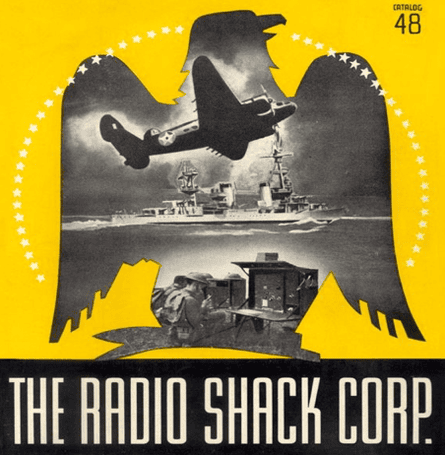
RadioShack knew it had a good thing going by the 60s: its ads showed casual and cool domestic bliss thanks to the latest in sound, as couples enjoyed their dandy portable FM-AM 9-Transistor radios on the beach, at the backyard grill or even in the family station wagon. The company expanded into “console organs” (keyboards) and trombones, electric guitars and table-sized “stereo phono consoles”.
The most technologically adept of neighbors installed “Talk-A-Phone Intercom Systems” to ward off the hippies at the door and climbed on to roofs to straighten antennas that offered “maximum reception on all channels 2 to 13”.
In that (technologically) simpler world, freshly elected president Richard Nixon had no idea how much trouble a newly accessible tape recorder would later cause him. Slowly, the United States became not just connected by wires hanging between poles and cords linking outlets to phones and televisions, but also wired through and through and recorded with electronics that RadioShack supplied.
In the 1970s, RadioShack came into its own. It sold the first all-electronic calculator in 1972 and “high-velocity” headphones in 1976, and struck it huge with the first CB radios that people could install in their cars.
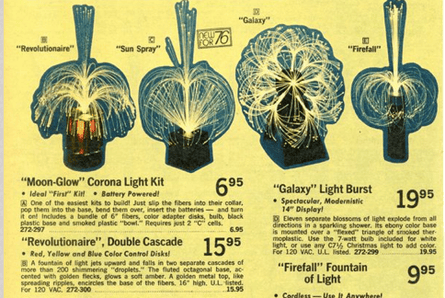
During a decade when the paranoid hangover of the 60s reigned side by side with disco balls, sideburns, David Bowie and Cher, Walkie Talkies changed the lives of buzz-cut neighbors, and decorative “Fiber Optics” lighting added shimmering decor to basements and bachelor pads across the land. Some RadioShack inventor first conceived the science fair kits that would survive several generations.
In 1977, the year of Star Wars and primitive descendants of Pong, RadioShack sold its first TRS-80, one of the earliest mass-produced computers that ran on an operating system designed by a mop-haired lad named Bill Gates, who also happened to be arrested that year for a traffic violation in New Mexico. RadioShack was ready to sell everything.
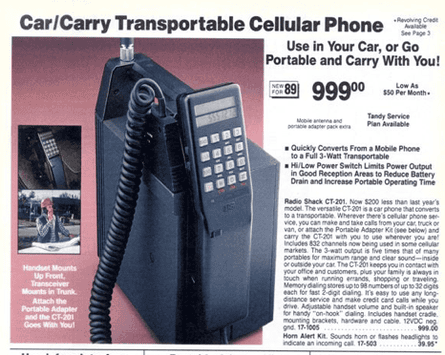
And so it did during its heydays in 1980s USA. The Walkman. Boomboxes. Supertape cassettes. Mini-tape recorders. Massive mobile phones that could be lugged by handle and eventually equipped with foot-long antennas. Color computing for the entire family.
If it could be remote-controlled, RadioShack would sell it: cars, tanks, monster trucks, skateboards, robots and a “battle iron claw for action-grabbing fun”. The VHS camcorder. Modern technology was no longer a novelty – it was the way things got done: finance, phones, music, entertainment, home and hearth itself. The future was computers and cordless and possibly robots, too.
RadioShack rode that wave of gadgetry into the 1990s, selling joysticks, beepers, CD players, and the essential VCRs even as competitors like Best Buy and Circuit City rose up out of the 80s with them. Americans wanted cordless phones and Game Boys, and RadioShack and its increasing fellows were happy to provide.
But as the decade went on, Americans’ appetite grew for technology that developed faster than shelves could empty. Intel, IBM and Microsoft learned to sell computers for themselves. The internet crept into common consciousness, and RadioShack, rather than try to join the next leap forward, stuck with retail and abandoned manufacturing and development. The Nokia ringtone, the Brian Eno-composed arpeggio and ding that opened Windows 95, and eventually the lowing “bong” of the Mac all sounded the death knell for RadioShack.
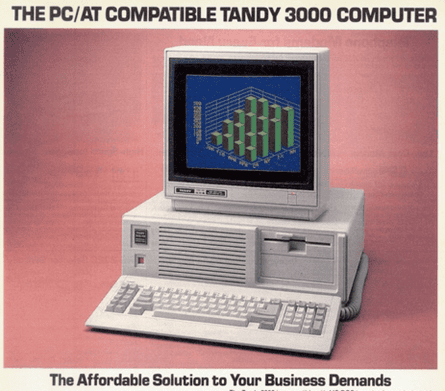
The new millennium did not go well. Technology changed too quickly, Apple introduced the smartphone, e-retailers swept through the market, and RadioShack gave up its quirky penchant for following American culture.
An attempt to rebrand the company “the Shack” evoked images of rural outhouses more than cutting-edge technology in consumers’ minds, and by 2014, a former employee found time to compose a long “eulogy” for the company and its “unsellable crap”. A nostalgia-fueled ad campaign failed to rouse old passion for the increasingly ramshackle retailers, and eventually its ownership realized the end had come.
RadioShack’s long story ended in a new century as messy and marked by technology as the retailer had been at its highest success: a bizarre collection of America’s most advanced contraptions and its most trivial and weird diversions, and all of it for sale. Unfortunately for the retailer, Americans outpaced it in both ingenuity and consumption, with no heed for the fact that RadioShack had helped wire their world together.
All photo credit goes to RadioShackCatalogs.com, which carries facsimiles of just about all the company’s annual catalogues.
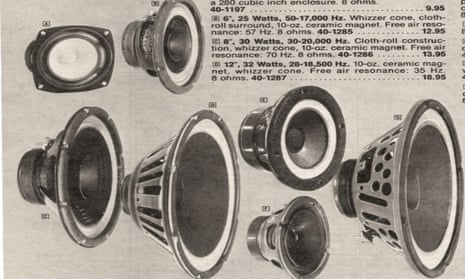
Comments (…)
Sign in or create your Guardian account to join the discussion